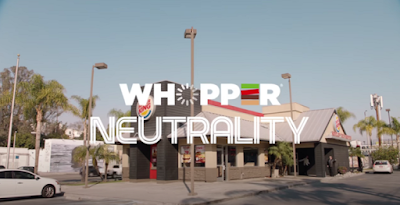Personalized marketing
Personalized marketing is the implementation of a strategy by which a company delivers individualized content to recipients through data collection, analysis, and the use of automation technology.
The goal of personalized marketing is to truly engage customers or prospective customers by communicating with each other as an individual.
There are numerous advantages of personalized marketing- for both businesses and consumers. Customers are more comfortable providing personal information to their favourite brands if they get something in return. They fill out forms, participate in surveys to get discounts, and indicate their favourite purchases or preferences.
 |
| Source: www.clevertap.com |
So, what’s the catch?
With all of this customer data being offered to the company, the consumer expects brands to protect any sensitive information and offer more personalized experiences when they come back. When consumers provide information and data, they expect to be treated as unique individuals with specific preferences.
Businesses that dedicate time and resources to implement successful personalized marketing strategies, will benefit from a competitive advantage in brand loyalty and customer satisfaction.
No one said it was easy.
When launching a successful personalized marketing strategy, ensure that you use a content personalization engine. If you are already leveraging a personalized platform, make sure to compare your existing solution against any other that claims to offer more value.
Capturing data, building analytical capabilities, and developing adaptable websites are all beneficial to an organization, but they are most valuable when they are in sync with each other. After just a few short weeks, your personalization solution should be able to provide relevant content recommendations to customers.
Nowadays, the average consumer expects personalization in every campaign your brand runs.
Here is a look at some examples of personalized marketing strategies.
1. Targeted Emails
Salesmen are using personalization to jumpstart their email campaigns.
Through personalization, you can create and send individualized emails to a specific group with certain needs.
Getting a better understanding of your demographic is key to making your email relevant. One way to start collecting customer information is through the periodic feedback form.
 |
| Source: www.smallbusinessrainmaker.com |
2. Custom Video Messages
Although this type of personalization is a lot more memorable for your audience, it can be time-consuming without the right automation technology in place. Make sure you have the necessary tools and have enough capital to scale if necessary.
 |
| Source: www.spiralclickblog.wordpress.com |
3. Product Recommendations
Product recommendations are a common tactic, which is highly effective. This stratagem uses data collection to determine what kind of product, service, or offer the user is interested in and tailor the recommendation accordingly.
 |
| Source: www.optimonk.com |
And lastly and this is a good one.
4. Fear of Missing Out (FOMO)
Want to know what drives up interest in a product? Fear – or fear of missing out, to be exact. By showing how many other people are currently looking at this same product, sites are incorporating FOMO personalized messages to convince customers that they need to buy that particular product.
 |
| Source: www.academy.pagefly.io |
The Bottom Line
Consumers demand more personalization throughout the buying journey now more than ever. If your personalized marketing strategy isn't tailored properly to every customer, they are less likely to purchase your products due to the lack of engagement with the company. Having a successful personalized marketing strategy in place can be the greatest asset your business has to offer.
-Daivik Jayan



Comments
Post a Comment